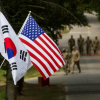The withdrawal of American troops from the Afghanistan in August 2021 was a turning point in the geopolitics of the region, thus creating a place for other actors to step in the place of the Western coalition. And within the past few years, China has significantly escalated its participation in Afghanistan due to commercial and security motives. As is true with the positive and negative elements of the drawdown, this shift has benefits and drawbacks for Pakistan. It fashions its entente with both China and Afghanistan.
China’s Strategic Interests in Afghanistan: Natural Resources and Stability
In Afghanistan, there are ore reserves estimated at one trillion dollars of minerals. China is interested in Afghanistan’s deposits of lithium, copper, rare earth metals, and gold to power its industries and BRI projects. Lithium, especially, is a critical input into China’s green energy blueprint given that it is an essential material for electric vehicles. According to various resources up until 2023, the country holds 1.4 million metric tons of lithium and can be seen as one of the world’s biggest suppliers.
China is also interested in the Mes Aynak copper mine, which is one of the biggest unexplored copper resources in the world; the mine is believed to contain about 450 million metric tons of ore. The now-stalled project will cost about $3 billion and has been undergoing inactivity for several years, mostly because of security issues. Now, with the Taliban desperate for fresh investments to prop up their fraught rule, Beijing again senses a shot at making good on such plans so long as security and political order can be maintained.
Apart from the economic factor, China believes that Afghanistan must remain stable because the country’s western Xinjiang province is only 76 kilometres from Afghanistan. The approval of the Taliban to ensure that groups such as the ETIM are not allowed to operate in Afghanistan is the guarantee to stabilize this border.
Pakistan’s Role: A Mediator on the China and Afghanistan Relations
Their reasons include Pakistan’s geographic location relative to Afghanistan, the country’s relationships with the Taliban in the past, and its separate connection with China. Since its founding, Islamabad has sought to become a middleman between Beijing and Kabul, and it has tried to be an essential intermediary between China and Afghanistan. Pakistan wants to avail the opportunity from China to increase investment in Afghanistan, especially the expansion of CPEC in Afghanistan. CPEC, among the BRI major projects, has already drawn in more than $62 billion of Chinese cash to Pakistan since 2015.
However, it is entitled to mention that there are some potential threats that Pakistan has to face in the realization of this strategic partnership. This growing entanglement might give Pakistan economic rents, but it also makes Pakistan vulnerable to balancing by other powers, especially India and the United States.
China as a Stabilizing Force: Security Threats and Diplomatic Realities in the Region
Chinese interest in Afghanistan is sometimes considered a bid to become the positive force that can stabilize the region. China has recognized and supported the Taliban politically and financially, and in return, Beijing demands stability, reconstruction, finances, and investment. Assisting Afghanistan, President Xi Jinping said China will provide $31 million in humanitarian cash for Afghanistan in 2021 to help with food, vaccines, and winter needs. In the same year, China also demanded other countries release Afghan frozen money, affirming its plans to economically stabilize the country.
This means that the relative stability of Afghanistan could in a definite way help alleviate interior security challenges in Pakistan, with its systematic revivals such as the Tehreek-e-Taliban Pakistan (TTP). However, Pakistan should ensure that it does not become the theater of operation of two power blocs amidst the balancing of superpowers. However, as the Asian giant increases its entanglement, the US continues to be suspicious of emerging superpower China’s broaching of the region, particularly after the US’s two-decade-long stay in Afghanistan. This poses options for conflict for Islamabad to work for China, with whom it has a strategic partnership but has always been a close ally of Washington.
India’s concern and Pakistan’s Diplomatic Place
One cannot underestimate India’s reaction to China’s growing influence in Afghanistan. The Indian capital, New Delhi, which built good relations with the previous Afghan government, has also worried about the Taliban’s return to power and China’s growing influence in the region. More than $3 billion invested in the Indian infrastructure sectors since 2001 are under threat as Afghanistan is moving closer to its northern neighbor China. Despite the moderate cooperation between Islamabad and Beijing, as well as a pivotal role in Afghanistan’s economy and politics, India has to worry about a prospective encirclement.
In this respect, for Pakistan, this is a particular challenge since the country has to find an equilibrium. On the other hand, it is positioned to gain from China’s economic ventures in Afghanistan. On the other hand, Pakistan’s tensions with India could rise even higher, especially along the eastern border, if New Delhi continues feeling left out in the Sino-Pakistani friendliness.
Implications for Pakistan: Caught Between Powers?
By asserting its influence in Afghanistan; Pakistan has emerged with more intricate challenges, in terms of dealing with China. There are good economic returns that can be exploited, and there are still the dangers of entangling oneself in the rivalry between the big two. The US, absent from Afghanistan in a military sense, still controls much of the anti-terrorism politics and counter-terrorism operations in the region apart from regional cooperation. The Biden administration has yet to provide a strategy for the far-reaching engagement with the region beyond withdrawal. Depending on the nature of the relationship with the former ally, it is expected that Washington will remain wary of Islamabad and Rawalpindi’s warming ties with Beijing.
There are various security threats that Pakistan has to face internally. TTP felt the boost upon the return of the Taliban to power, and it has been staging deadly attacks within Pakistan. TTP has escalated TTP-related violence by fifty percent in 2022, and it has killed over 200 Pakistani security forces. China wants Afghanistan to stay stable to avoid having another unstable neighbor as it does Pakistan, however, if the two countries cannot rein in the extremists, then the whole of central Asia is in danger.
Conclusion
Opportunities and Challenges: Pakistan will gain economically from Chinese investments in Afghanistan’s minerals and infrastructure. In contrast, the negative external factor is the risk of Pakistan being found in a complex diplomatic rivalry involving China on the one side and the U.S. and India on the other. For Pakistan, the question will be controlling the balance of power and trying not to allow either extreme contender to become dominant while playing both regions and China and the US off each other. Here Pakistan’s diplomatic and security point of view will have a decisive role in determining the course of Afghanistan’s future as it keeps changing.

















